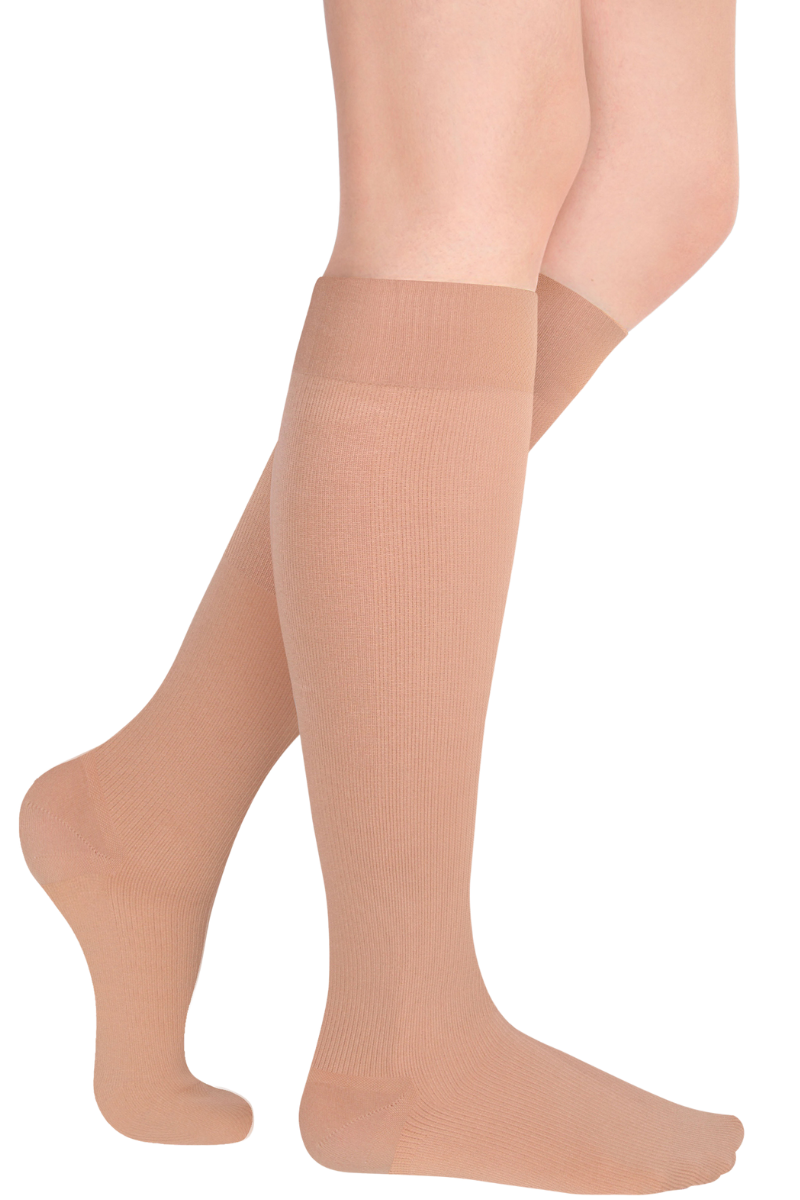
Compression Stockings
Compression stockings help relieve symptoms and slow the progress of varicose veins. They improve circulation and are a mainstay of treatment for varicose veins that are causing symptoms. (Mild varicose veins that are not causing symptoms don’t need treatment.) Doctors often recommend that you wear the stockings during the day to help relieve symptoms. See a picture of how to put on compression stockings. Not everyone with varicose veins needs compression stockings.
- For very mild symptoms, you may want to start out using regular support panty hose, knee-highs, or knee socks (which end just above the calf, below the knee). You may find that these help swelling and aching considerably. They are also less expensive than the special compression stockings a doctor prescribes and are available at most department stores.
- You can also buy compression stockings from pharmacies or department stores that are used to treat leg swelling. They are made of lighter-weight elastic, and the pressure created is even all the way up the leg. (It is best if pressure decreases as the stocking moves up your leg; this is called graduated compression.) As a result, thigh-high stockings of this type may not be a good choice. Without garters, they slip down and bunch up and can worsen varicose vein problems.
- Avoid elastic bandages for varicose veins unless your doctor specifically suggests them. They can cut off blood flow and may make varicose veins worse. (If this type of bandage is recommended, ask how to wrap it.)
For more serious symptoms, you may want to buy special compression stockings from a medical supply store (with a doctor’s prescription), where you can be fitted for them. These stockings are tighter at the feet and get looser as they go up (graduated compression).
- Prescription compression stockings may cost between $60 and $100 a pair. A pair usually needs to be replaced after 4 to 6 months of regular use. (Compression stockings are available as panty hose but are more expensive.)
- If you have serious varicose vein symptoms and are considering these, be sure not to buy stockings that are too tight and uncomfortable, or you may not wear them.
Put your compression stockings on first thing in the morning before getting out of bed. If you wait, your legs and feet may swell.
Compression stockings have disadvantages.
- They are hot and can be uncomfortable when worn all day.
- They are expensive.
- They may be difficult for older adults, overweight people, and those with arthritis to put on.
Consider the discomfort and inconvenience of compression stockings compared with the chance that they may help keep your problem from getting worse and may help you avoid surgery.
